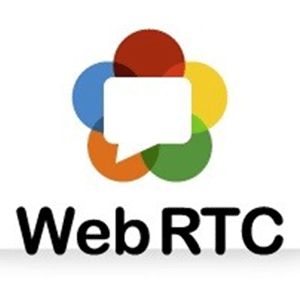Contact centers need a flexible and secure infrastructure to support remote access to support home agents, “on the go” leaders, outsourcers, business continuity, and branches and retail outlets. Fortunately, enhancements in core technology and network connectivity, along with the proliferation of cloud systems, create a simplified approach to remote access to contact center systems.
For most VoIP contact center solutions, agents can specify the phone number to use at log in. Calls can be delivered to a cell phone, home analog line, or any extension on an existing PBX. Virtual Private Networks (VPN) and Virtual Desktop Infrastructure (VDI) (e.g., Citrix) offer the ability to securely log into the required systems remotely with limited reliance on the remote computer’s operating speed and capacity.
This post focuses on two other technologies that simplify remote access: WebRTC and Improved Home Networks.
Web Real-time Communication (WebRTC)
WebRTC allows users, from within a browser, to send real-time media without the need for installing plugins. Users can contact another party simply by browsing to a relevant web page for real time audio and video calls, web conferencing, and direct data transfers. WebRTC provides a secure, encrypted, peer-to-peer connection with no server in the middle.
 Contact centers can take advantage of WebRTC to replace the VoIP browser client (“softphone” for the voice path) or the physical desk phone for flexibility and reduced cost. Using WebRTC within contact center applications can simplify processes by enabling functions such as audio or video calling from within a CRM application. Agents can work anywhere with internet access and a WebRTC compatible computer. Contact centers can add sites (even globally) with limited time and reduced technology, cost, and risk.
Contact centers can take advantage of WebRTC to replace the VoIP browser client (“softphone” for the voice path) or the physical desk phone for flexibility and reduced cost. Using WebRTC within contact center applications can simplify processes by enabling functions such as audio or video calling from within a CRM application. Agents can work anywhere with internet access and a WebRTC compatible computer. Contact centers can add sites (even globally) with limited time and reduced technology, cost, and risk.
WebRTC activates automatically by loading an HTML page when the agent logs on through their browser, thereby simplifying installations and updates for remote workers. The result: Fewer vendors to deal with, less software to manage and maintain, and remote locations can scale much more easily. There are browser limitations, but WebRTC is currently supported in Chrome and Firefox. Microsoft has announced support in Edge, and there are rumors about Apple support in Safari.
WebRTC requires explicit permission for a camera or microphone to be used. Hackers cannot arbitrarily gain access or operate a camera or microphone. When in use, WebRTC expressly shows the user that their microphone and/or camera are in use with icons on the browser tabs in clear view of the user. WebRTC requires encrypted communication. Because WebRTC is designed for security, it is typically regarded as one of the more secure VoIP solutions available; security and encryption are not optional.
WebRTC enables agents to operate on low-cost devices (e.g., tablets, Chrome Books); they don’t need a robust desktop. It is ideal for centers with remote staff that pitch in when needed – including for business continuity. It is also great for centers with seasonal peaks that don’t want to invest in lots of desktop infrastructure that is not routinely used. For remote connectivity, WebRTC helps by eliminating the need for a direct dial line and a hard phone, and removes the burden of configuring and maintaining voice paths for these scenarios.
Improved Home Networks
Home networks, historically a challenge for remote connectivity, have improved in ways that simplify the IT burden and improve operational characteristics. Encryption is becoming more standard. Users can bolster security by: (i) creating a strong network password; (ii) changing the default IP address and the default login password; and, (iii) keeping the router firmware up to date.
 Home network bandwidth has expanded, whether through cable, DSL, fiber, or satellite. Home (wireless) connections are so good that agent positions don’t even need to be hard wired. Older wireless routers can reduce the expanded home network bandwidth (speed and capacity) options, so remote workers should ensure the wireless router has capacity and speed that is equivalent to or better than the capacity and speed of the internet service.
Home network bandwidth has expanded, whether through cable, DSL, fiber, or satellite. Home (wireless) connections are so good that agent positions don’t even need to be hard wired. Older wireless routers can reduce the expanded home network bandwidth (speed and capacity) options, so remote workers should ensure the wireless router has capacity and speed that is equivalent to or better than the capacity and speed of the internet service.
Expanded home networks work hand in hand with WebRTC to create a simplified, flexible, and robust remote worker environment.
For more information, read the full article on remote access »
